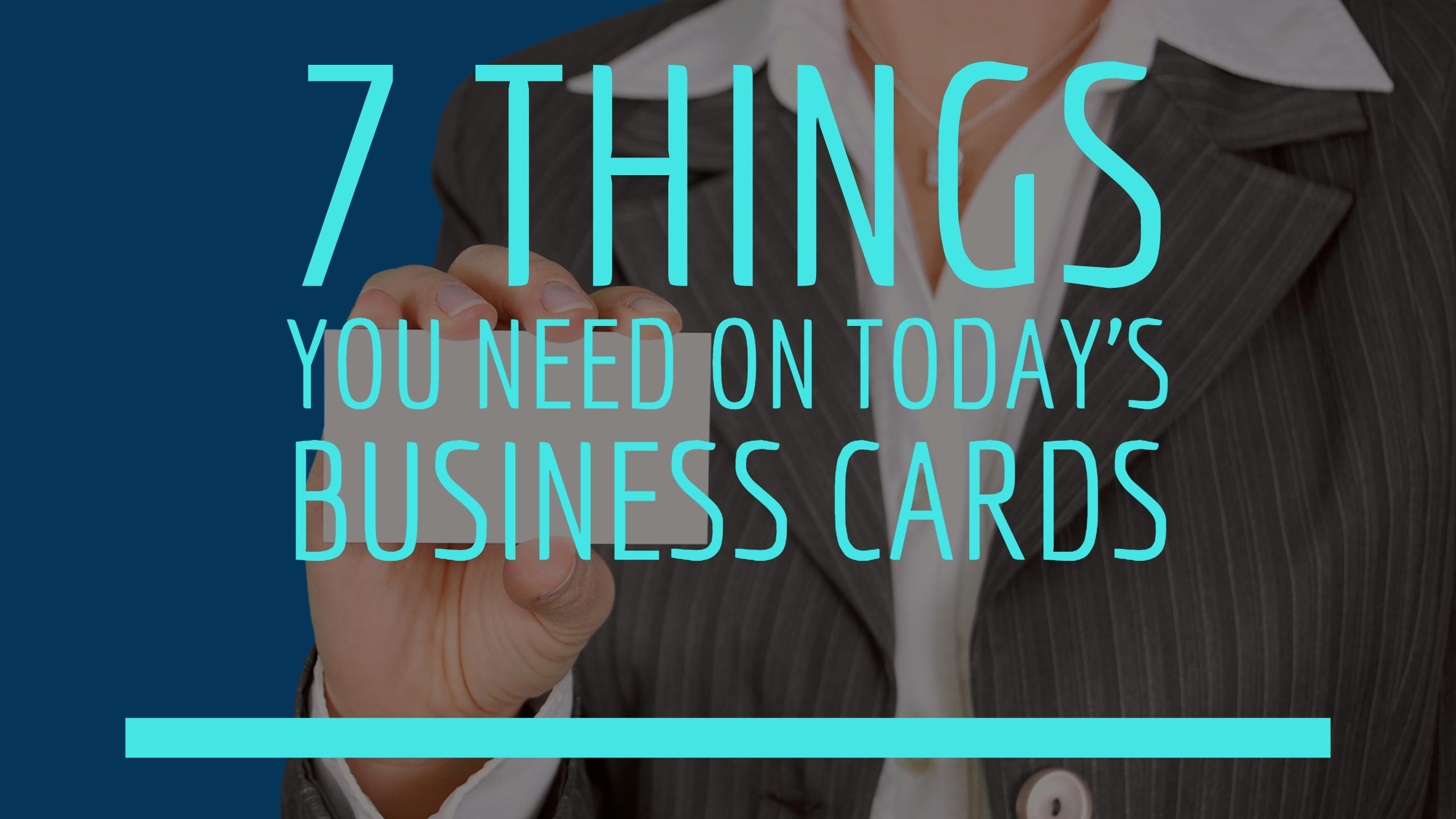
Every so often, you’ll see a blog post or article on how business cards are dead. While many people live in the e-world and prefer electronic communications, business cards are still one of the easiest ways to exchange information. The trick to someone holding on to yours is to make sure it stands out from the crowd. Also, never force a card on someone. If you do, they’ll likely shove it somewhere never to be seen again.
7 Things Modern Business Cards Need
In addition to what the card looks like and how you give it away, you want to make sure you have the following things on your cards (but not necessarily in this order):
- The name you go by. This is not college graduation. You don’t have to use your given name. No one is cross-checking birth certificates.
- Your title. Cutesy titles are fun and memorable, just make sure that someone who’s reading it later or passing it onto a friend can tell what you do from it. If you are a solopreneur don’t slap CEO, President or Founder on there unless your company name tells them what you do. For instance, CEO of Joe’s Plumbing is self explanatory but President of Denise Macleod, LLC will get your card tossed because no one knows if I’m a financial consultant, business guru, or paddle board instructor.
- Company tagline and image. Your card is an extension of your brand. It needs to look like your business and “sound” like it too. Having said that, you don’t need to add just a logo. Sometimes it’s much more effective to use pictures that signify who you are as a company — pictures of your people, your building, or something that makes an impression but easily links to you.
- A landing page. While it’s tempting to slap your business website on there, if they have your email, they can deduce your website/home page. Instead, send them to a landing page that’s tailored to however you use your business cards. For instance, if you use them solely for in-person meetings, send them to a landing page that uses language like, “Nice to meet you” and “Glad you stopped by.” You can measure this traffic and know that it came from your card.
- Cell phone number, particularly if you’re away from your desk often.
- Your other contact information. If you’re extremely active on social media consider adding a platform or two to your card. For instance, a photographer would be well served to add her Instagram account to her business card or a QR code that went directly to a portfolio. People will need that to hire you so you may as well make it easy for them to find. Note: if you don’t have a brick-and-mortar store, there’s no reason to give a physical address unless you envision having people come to your location. There are some careers where an address lends legitimacy like it may for an accountant. For a photographer your website or e-portfolio is much more relevant. Don’t forget your email.
- Space. Let’s be honest, most people don’t like clutter — even those who live in cluttered homes would tell you less is better — especially when it comes to visual clutter. If you need to cut things for space’s sake so be it. Don’t jam every part of your life on a business card. Add the easiest ways to contact you as well as the most pertinent. Don’t waste your time including things because everyone else does if it doesn’t apply to you (like a physical address).
Finally, printing costs have dropped over the past ten years. It’s not as expensive as it used to be to do small print runs. Another creative approach to cards is doing smaller print runs with specific calls to action. This could be “Visit us at Booth X at X Conference” or announcing a summer discount. Directing people to do something will drive action on their parts.
What would you add to this list?






Leave a Reply